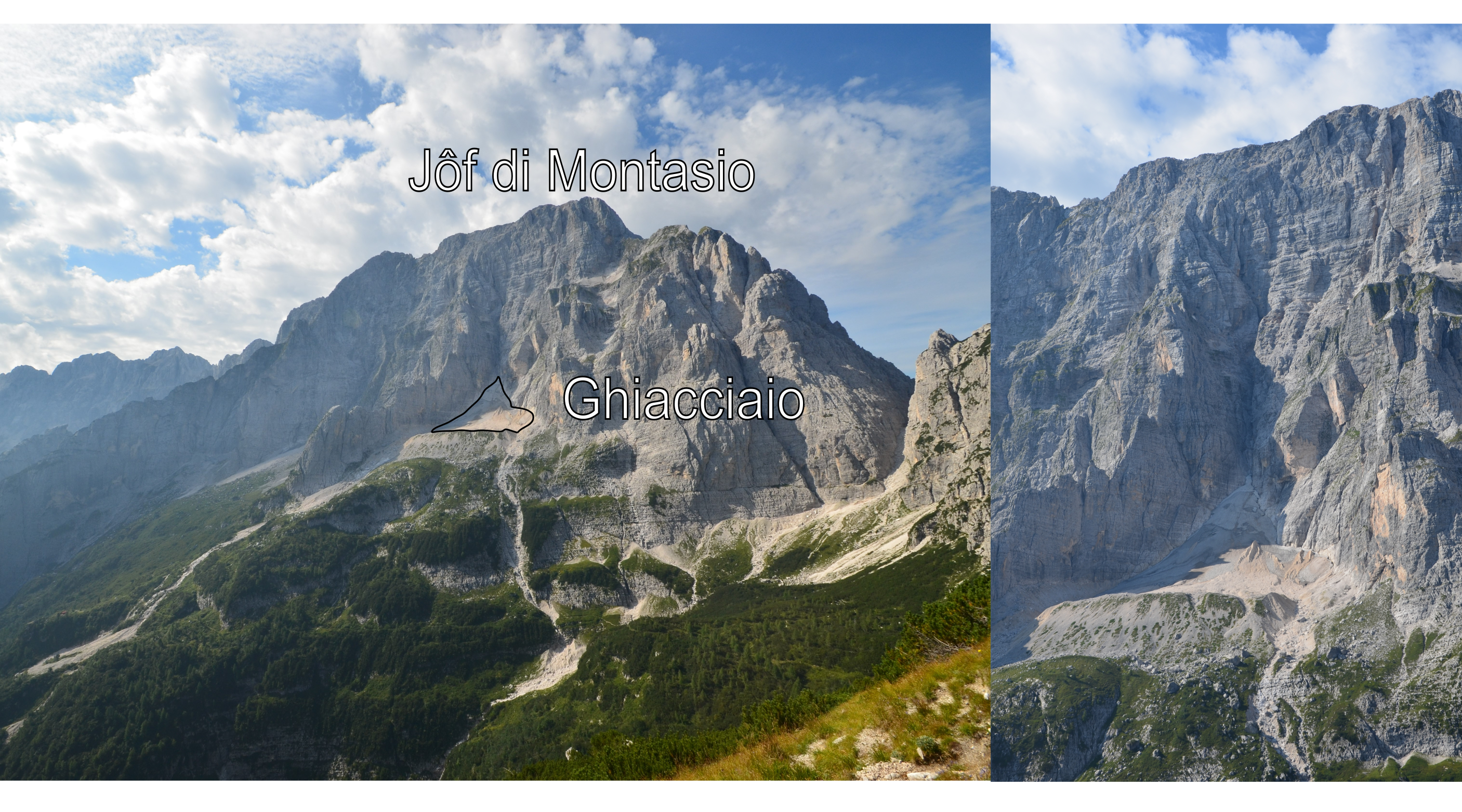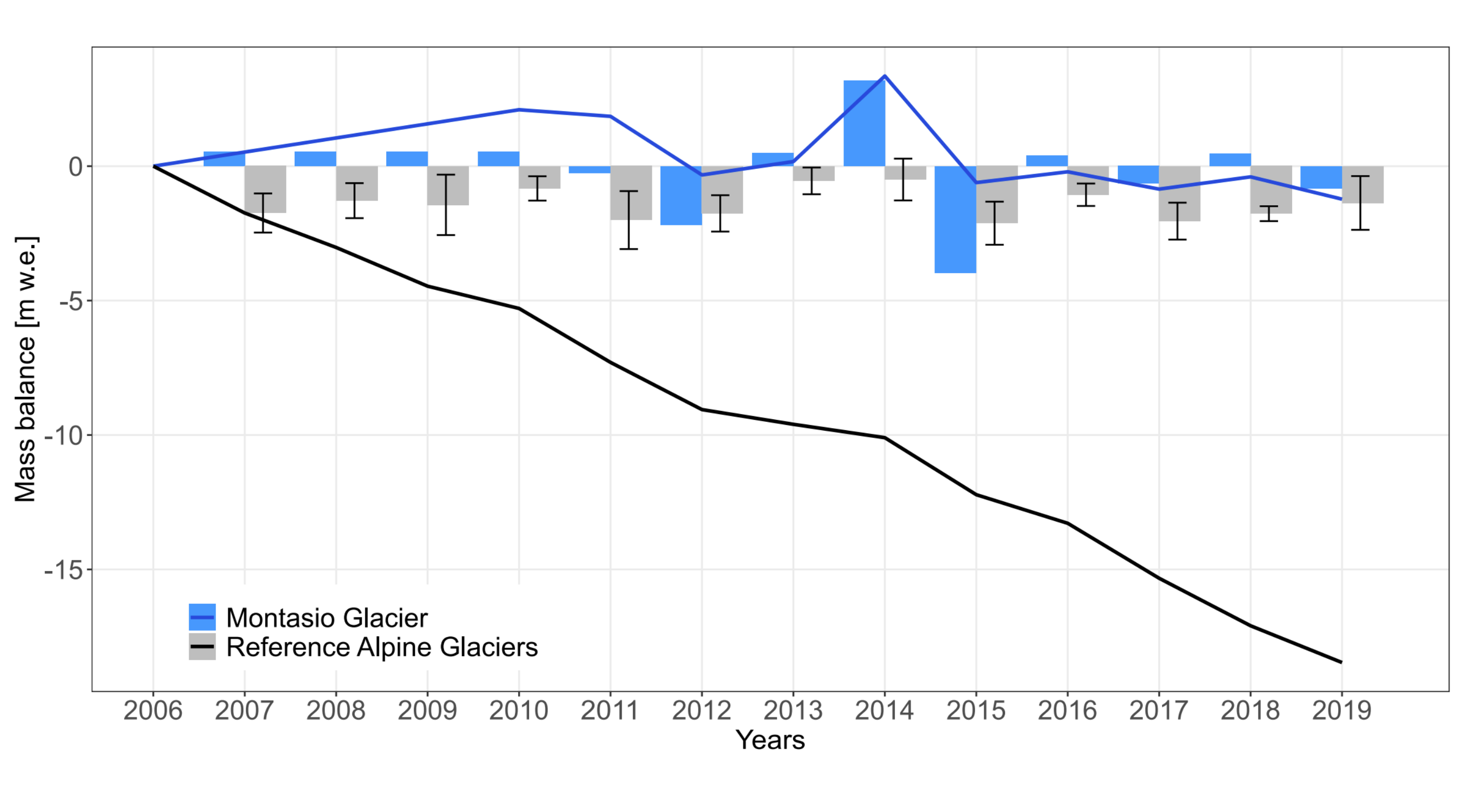PhD Top Stories
Jessica De Marco
High precision monitoring of the lowermost Italian glacier
Doctoral Programme in Environmental Life Sciences (University of Trieste-University of Udine)
Here in Friuli-Venezia Giulia, hidden in the Julian Alps, there is the lowermost Italian glacier: the Occidentale del Montasio Glacier (Figure 1). Its discovery dates back to 1920, when the famous geologist Ardito Desio classified it as a real ‘glacier’ located at the base of the vertical northern walls of Mount Jôf Montasio. The glacier is located at an average altitude of 1910 m a.s.l., it is partially covered by debris and is formally considered a very small glacier due to its extension smaller than 0.5 square kilometers..
It is well known that glaciers are valuable indicators of the current global warming due to their high sensitivity to climate changes. In particular, this glacier presents some peculiarities that make it worth studying to understand the possible future development of similar very small glaciers located in alpine areas. In fact, medium- to large-sized glaciers have been already widely studied to understand past, present, and future responses to climate change, while smaller ice bodies deserve further investigations since they tend to have a highly scattered response and since their number is increasing as a consequence of the fragmentation of larger glaciers. Therefore, we analysed the geodetic mass balance of the Montasio Glacier along the 13 years between 2006 and 2019, and compared the results with the evolution of the main climatic drivers, temperature and precipitation. High resolution topographic data were collected using different techniques like aerial laser scanner (ALS or LiDAR), terrestrial laser scanner (TLS) and ground/drone-based structure from motion (SfM), using state-of-the-art techniques. The topographic surveys have been carried out in collaboration between the University of Udine (HydroLab Research group), the Friuli-Venezia Giulia Region and the University of Padova (Cryosphere and Hydrology Group).

Figure 1: The Occidentale del Montasio Glacier, Val Saisera-Julian Alps, Friuli-Venezia Giulia Region (Photos F. Cazorzi 16th August 2012)
Temperature and precipitation data at the Montasio Glacier altitude were reconstructed from the raw data provided by the Friuli-Venezia Giulia-OSMER office for the thirteen years under study (2006-2019) and the previous five decades, for a total of 60 years (1960-2019). These data were used to analyse the annual mass balance fluctuations in relation to the annual and seasonal weather conditions, and to compare the current climatic conditions with long-term means and trends in the previous five decades. The study highlighted the unusual behaviour of this glacier that is characterised by a remarkably low mass loss rate, compared to other alpine glaciers in Figure 2. Moreover, we found that the precipitation during the winter season had a high influence on the mass balance confirming that the glacier is not just fed by solid precipitation (snowfalls) but also by avalanches released by the north side of the Mount Jôf Montasio. Actually, avalanche activity was found to be the mayor contributor to the glacier mass balance. On the other hand, the glacier has a low sensitivity to changes in air temperature. This unusual behavior is related to the thick debris-cover, especially in the lower part of the glacier (Figure 1) that creates an insulating layer which, combined with the shadowing by the high rock walls of the Mount Jôf Montasio, reduced the mass loss of the glacier and its sensitivity to air temperature.

Figure 2: Annual and cumulated geodetic mass balance on the Montasio Glacier compared with the average glaciological annual and cumulated balance of nine reference glaciers in the European Alps, in the period from 2006 to 2019
Authors and affiliations
Jessica De Marco1,2, Luca Carturan3,4, Livia Piermattei5, Sara Cucchiaro1,3, Daniele Moro6, Giancarlo Dalla Fontana3, Federico Cazorzi12Department of Life Sciences, University of Trieste (DSV), Via E. Weiss, 2, 34128 Trieste, Italy
3Department of Land, Environment, Agriculture and Forestry (TESAF), University of Padova, Viale dell’Università, 16, 35020 Legnaro (Padova), Italy
4Department of Geosciences, University of Padova, Via Gradenigo, 206, 35131 Padova, Italy
5Chair of Physical Geography, Catholic University Eichstaett-Ingolstadt, 85072 Eichstaett, Germany
6Autonomous Region Friuli-Venezia Giulia, Direzione Centrale Risorse Agroalimentari, Forestali e Ittiche, Servizio Foreste e Corpo Forestale, Struttura Stabile Centrale per L’attività di Prevenzione del Rischio da Valanga, 33100 Udine, Italy
Contact
Jessica De Marco, email: jessica.demarco@phd.units.itReference
De Marco, J.; Carturan, L.; Piermattei, L.; Cucchiaro, S.; Moro, D.; Dalla Fontana, G.; CazorziF. Minor Imbalance of the Lowermost Italian Glacier from 2006 to 2019.
Water 12, 2503 (2020)
DOI: 10.3390/w12092503
Informazioni aggiornate al: 03.5.2022 alle ore 07:22
Contact: Webmaster - Università di Trieste pagina curata da: Research Doctorate

Piazzale Europa, 1 - 34127 - Trieste, Italia -
Tel. +39 040 558 7111 - P.IVA 00211830328
C.F. 80013890324 - P.E.C. ateneo@pec.units.it


